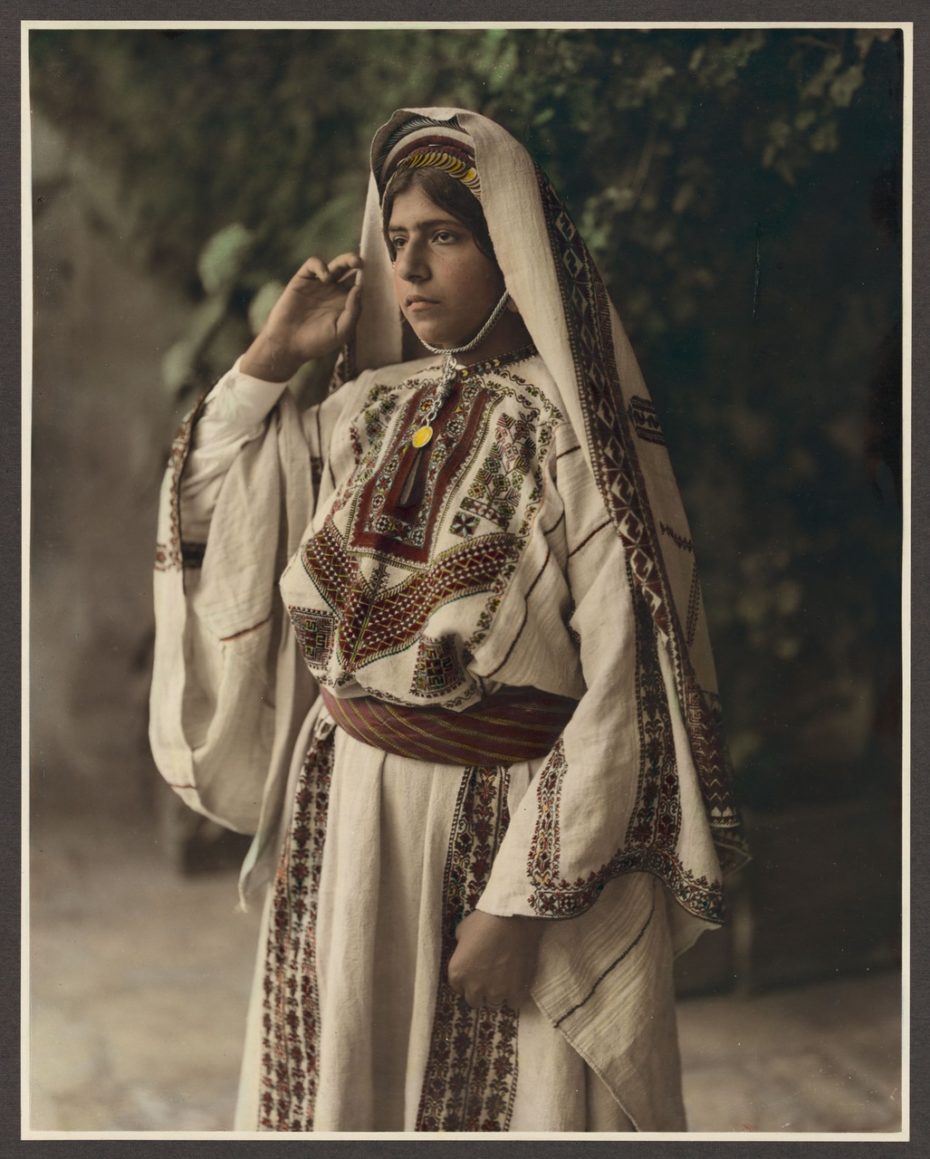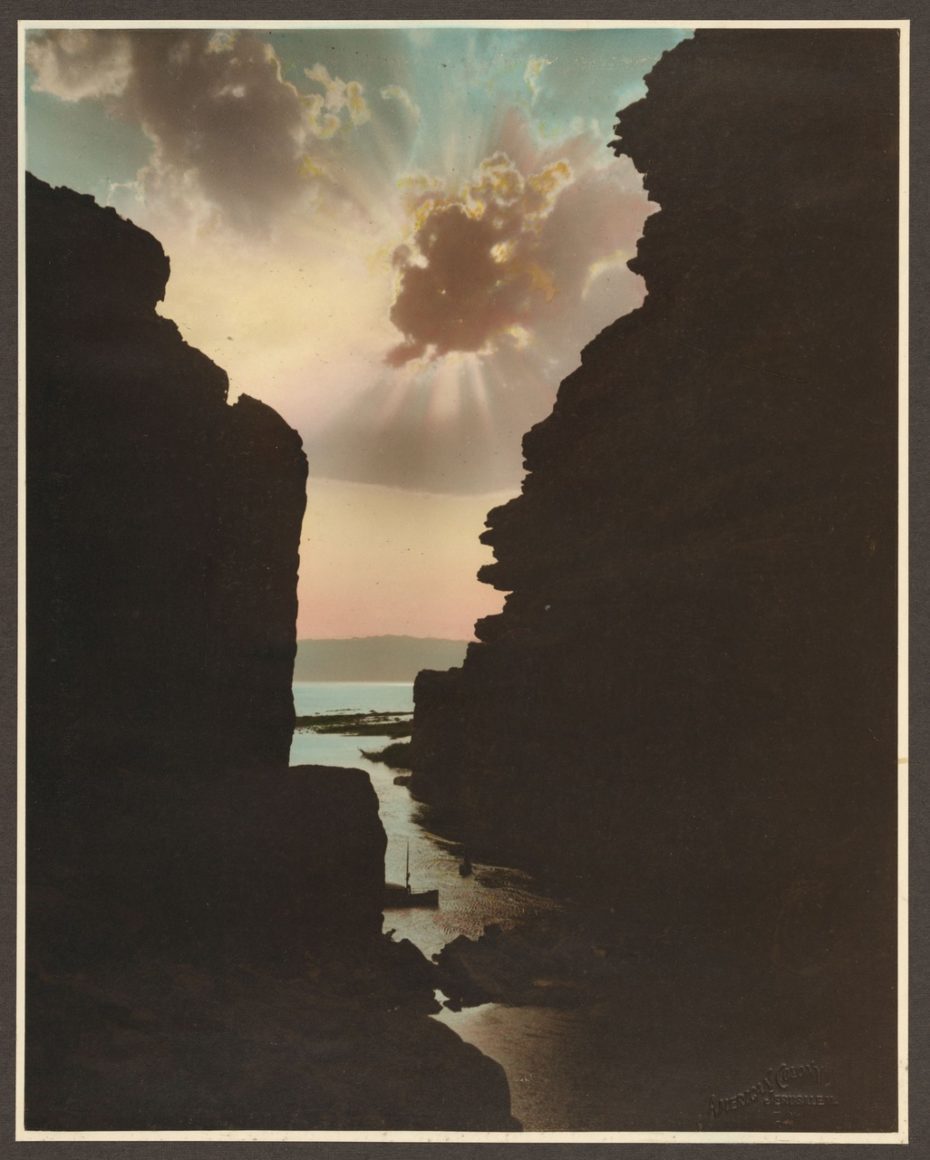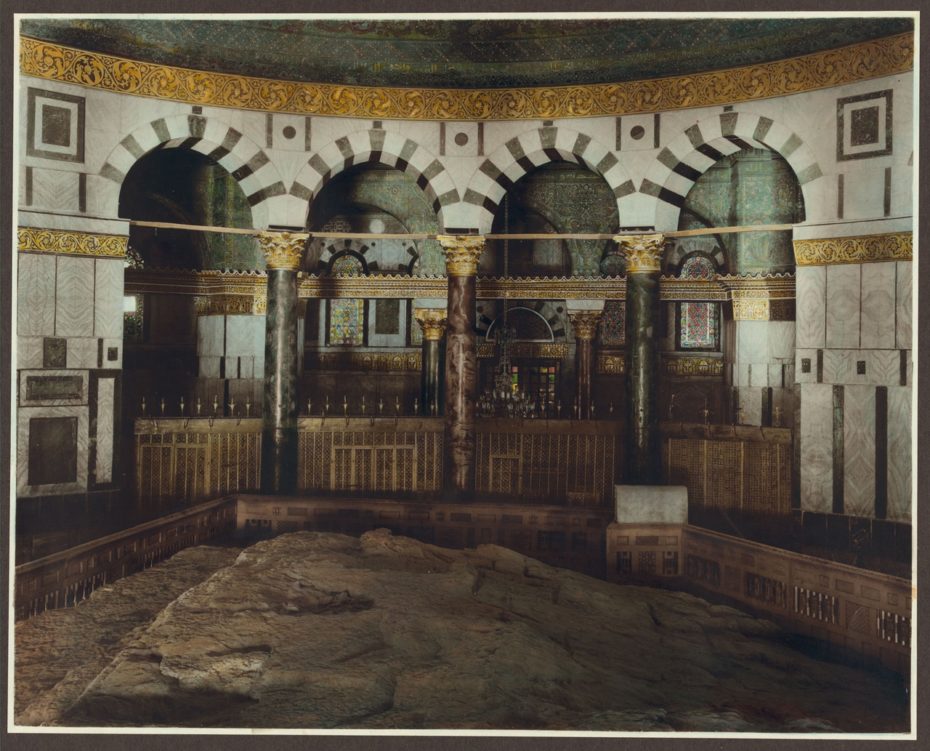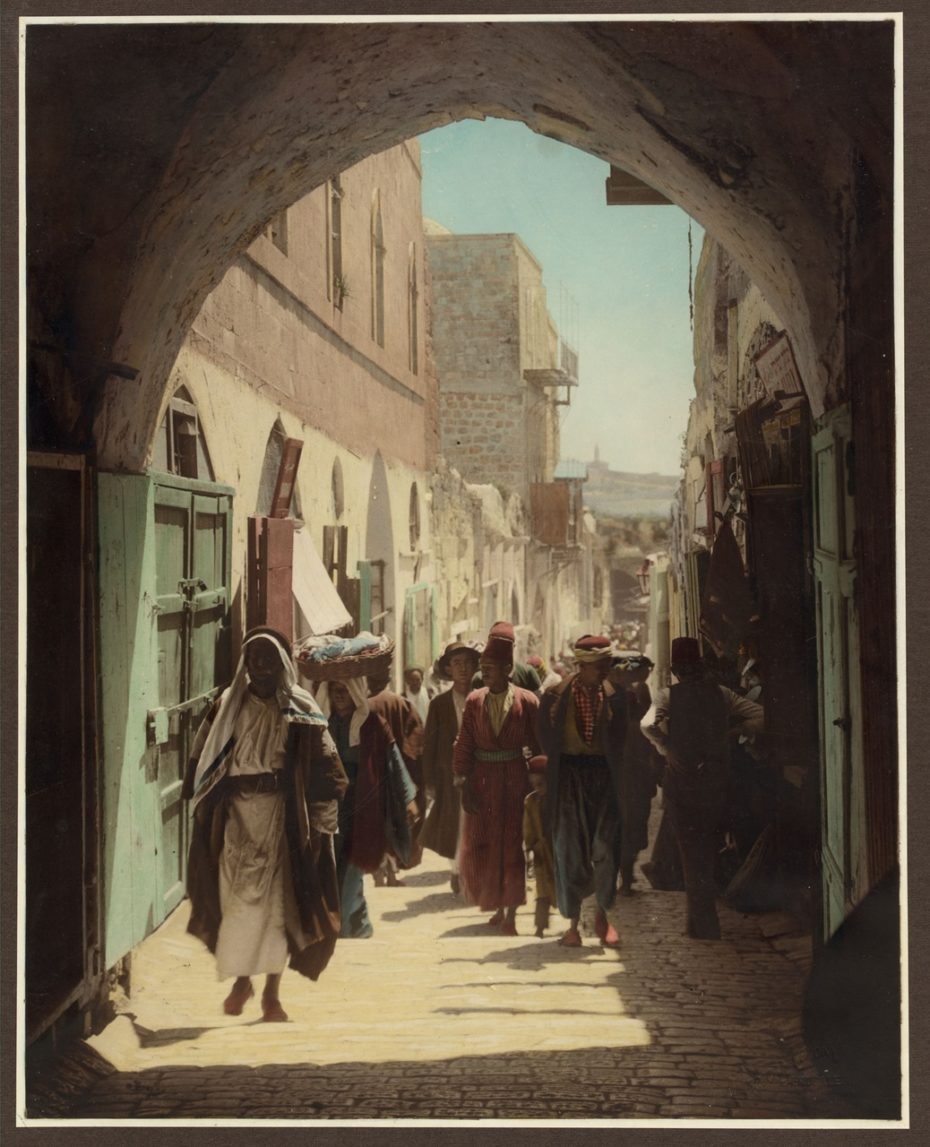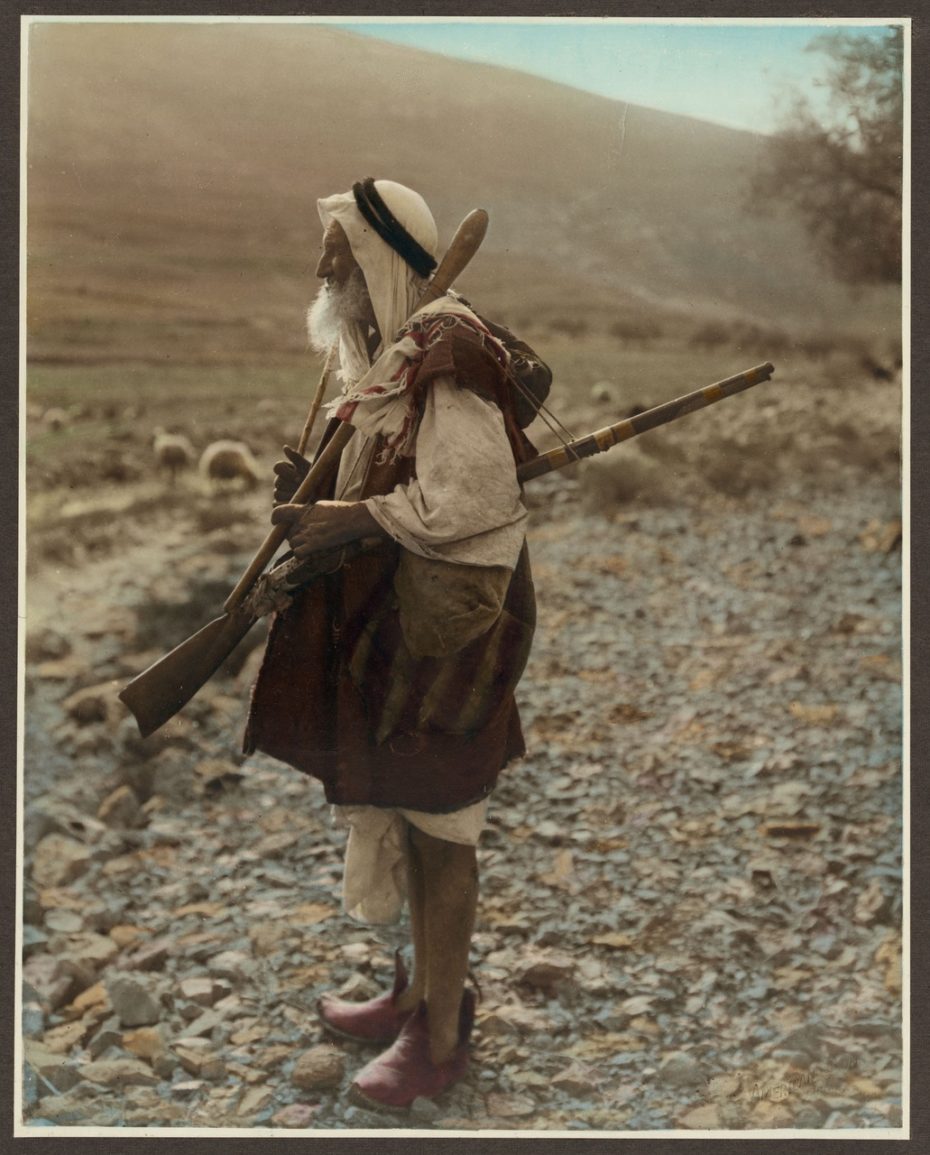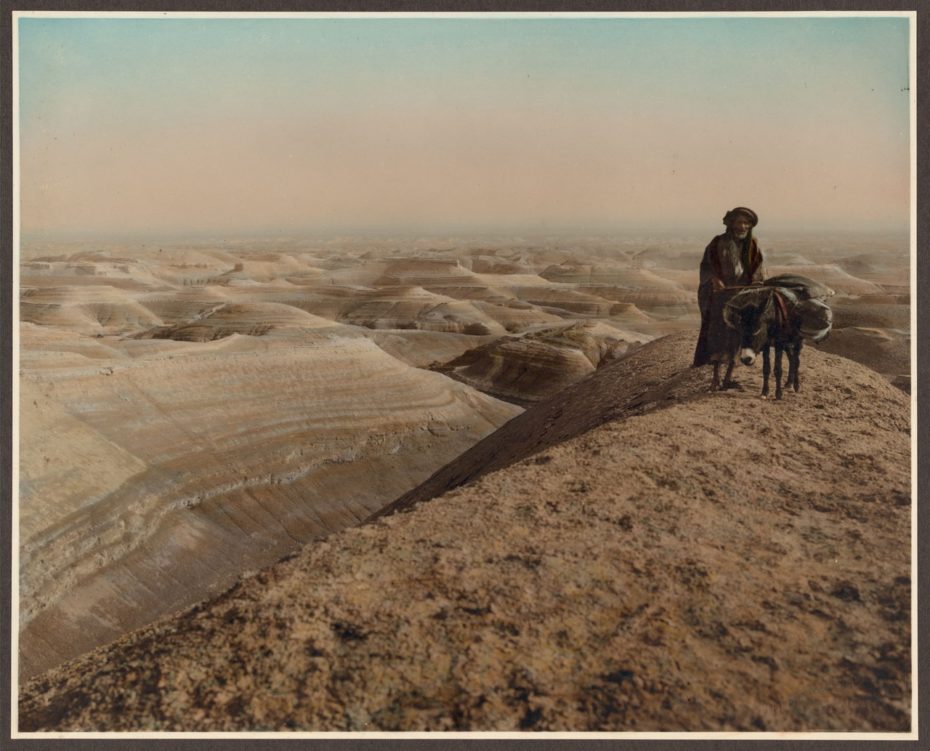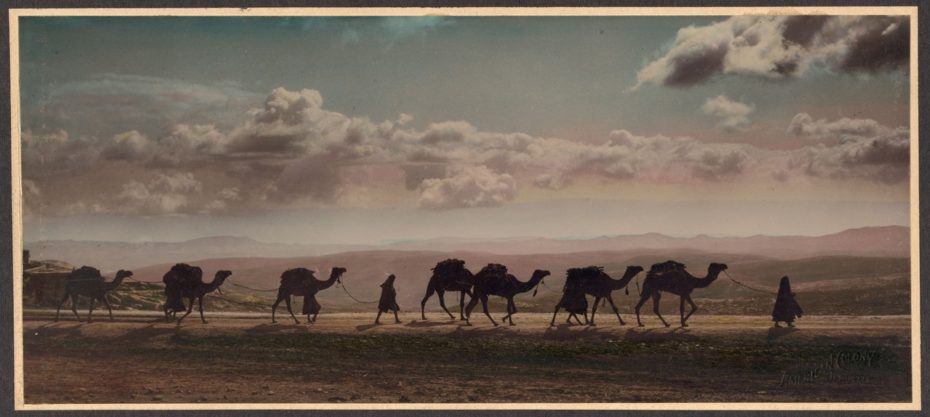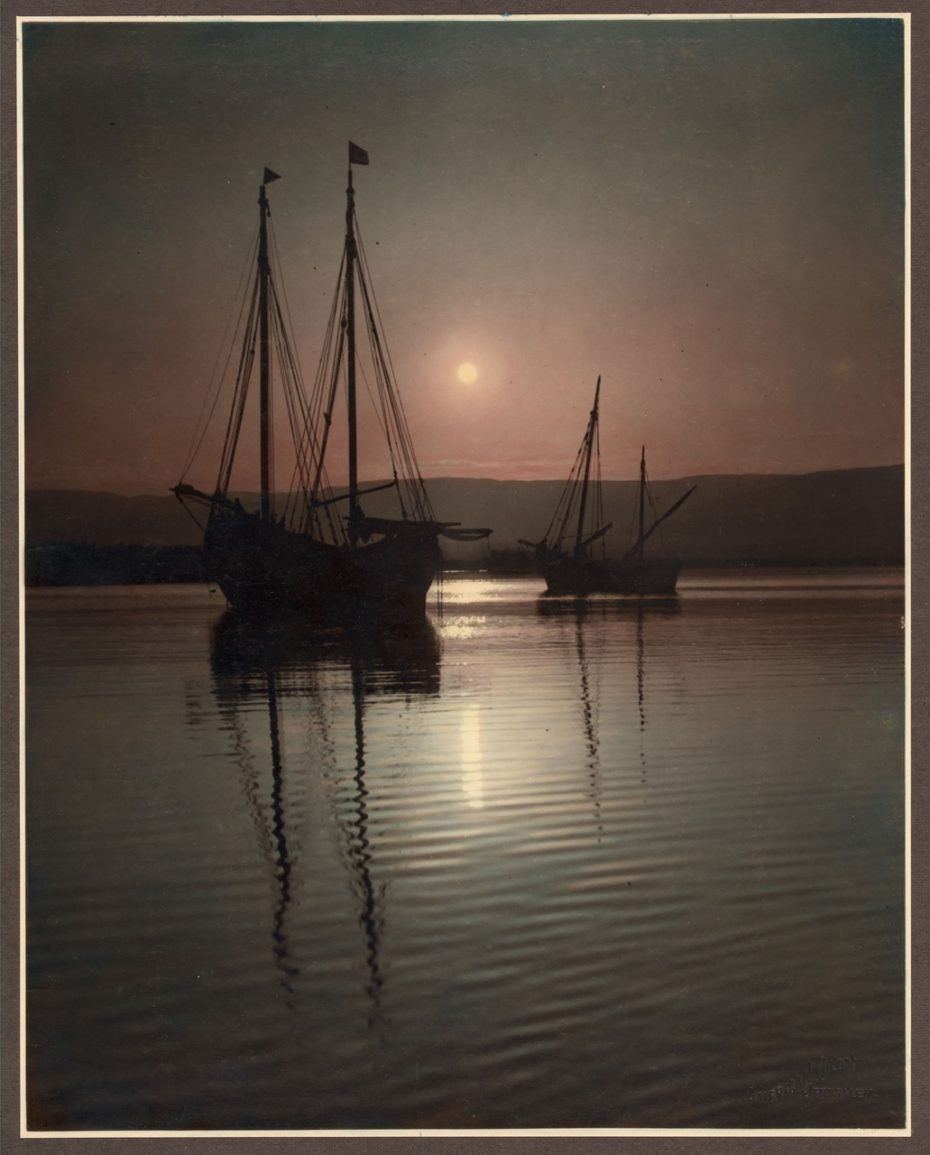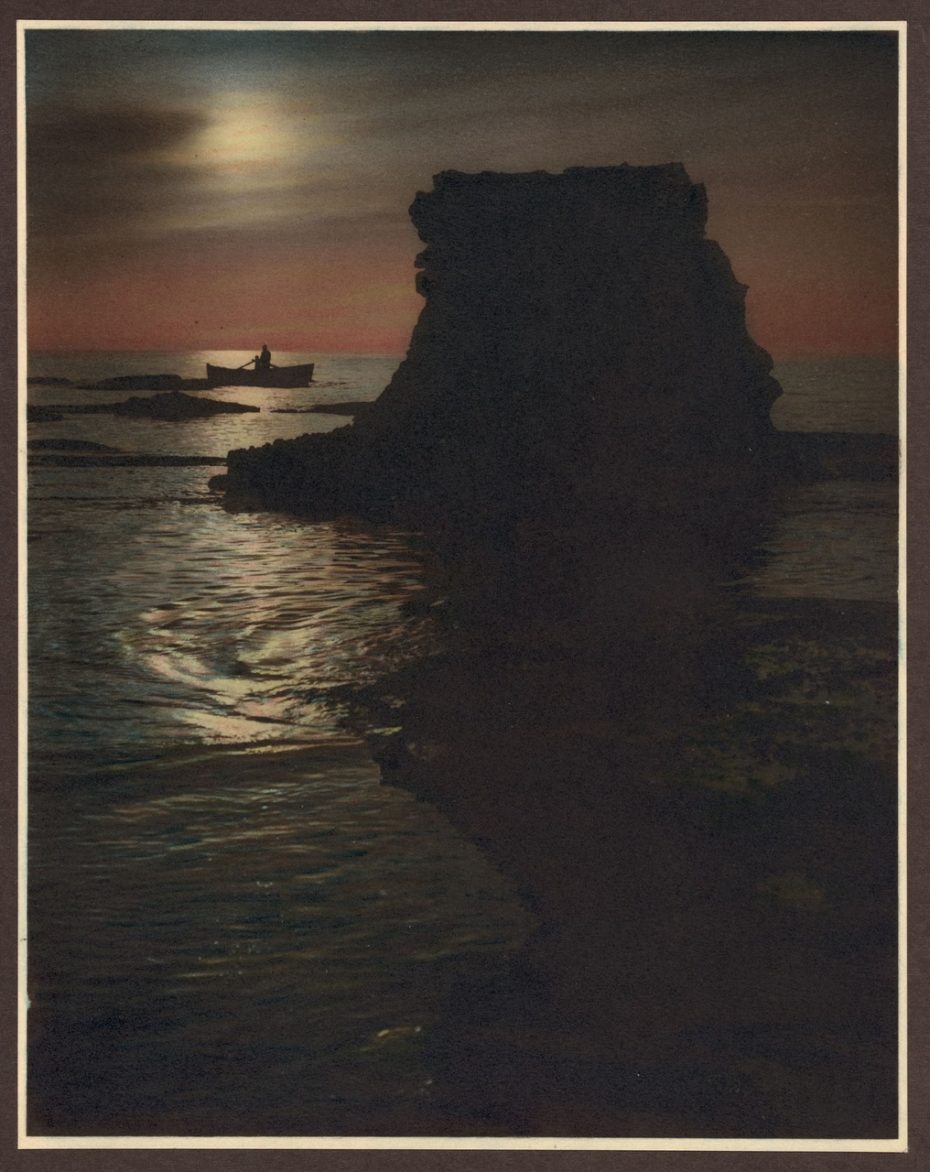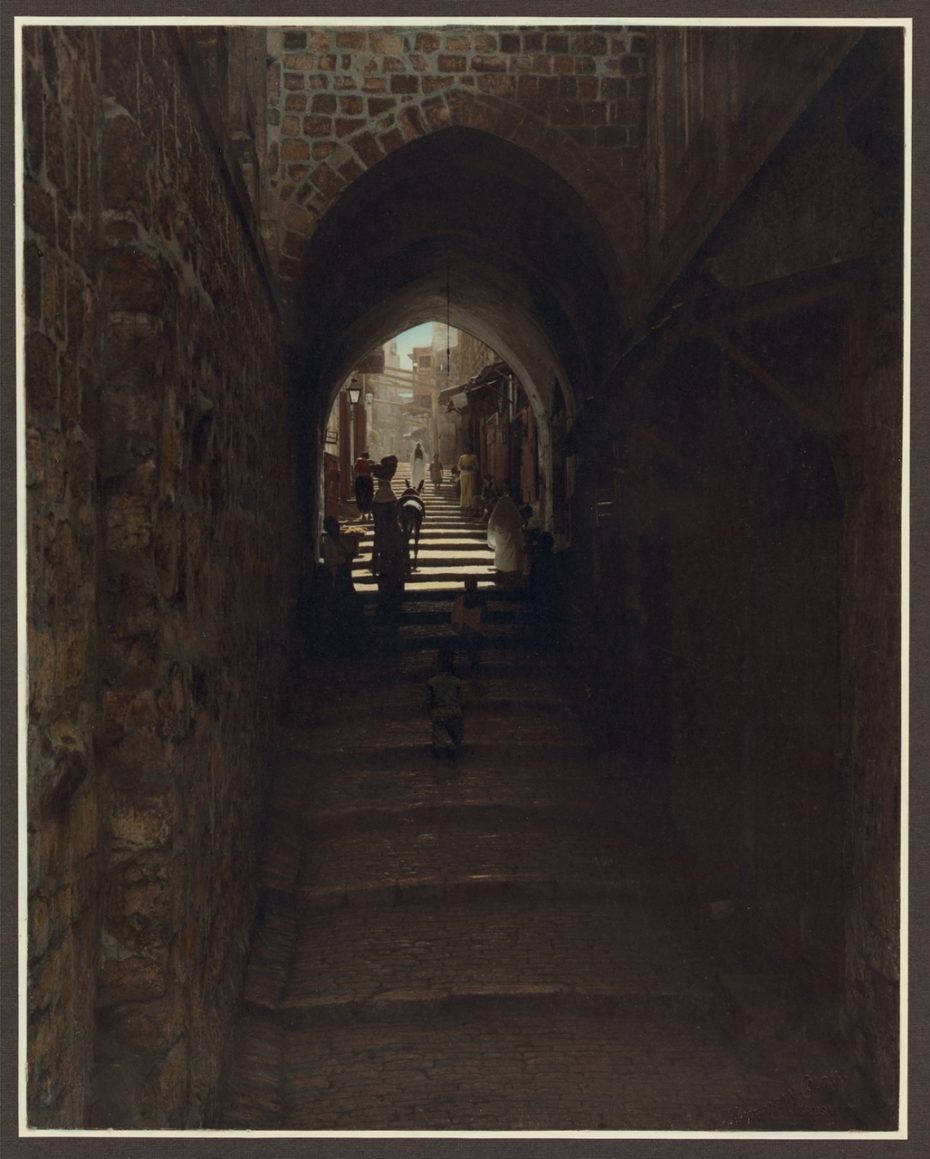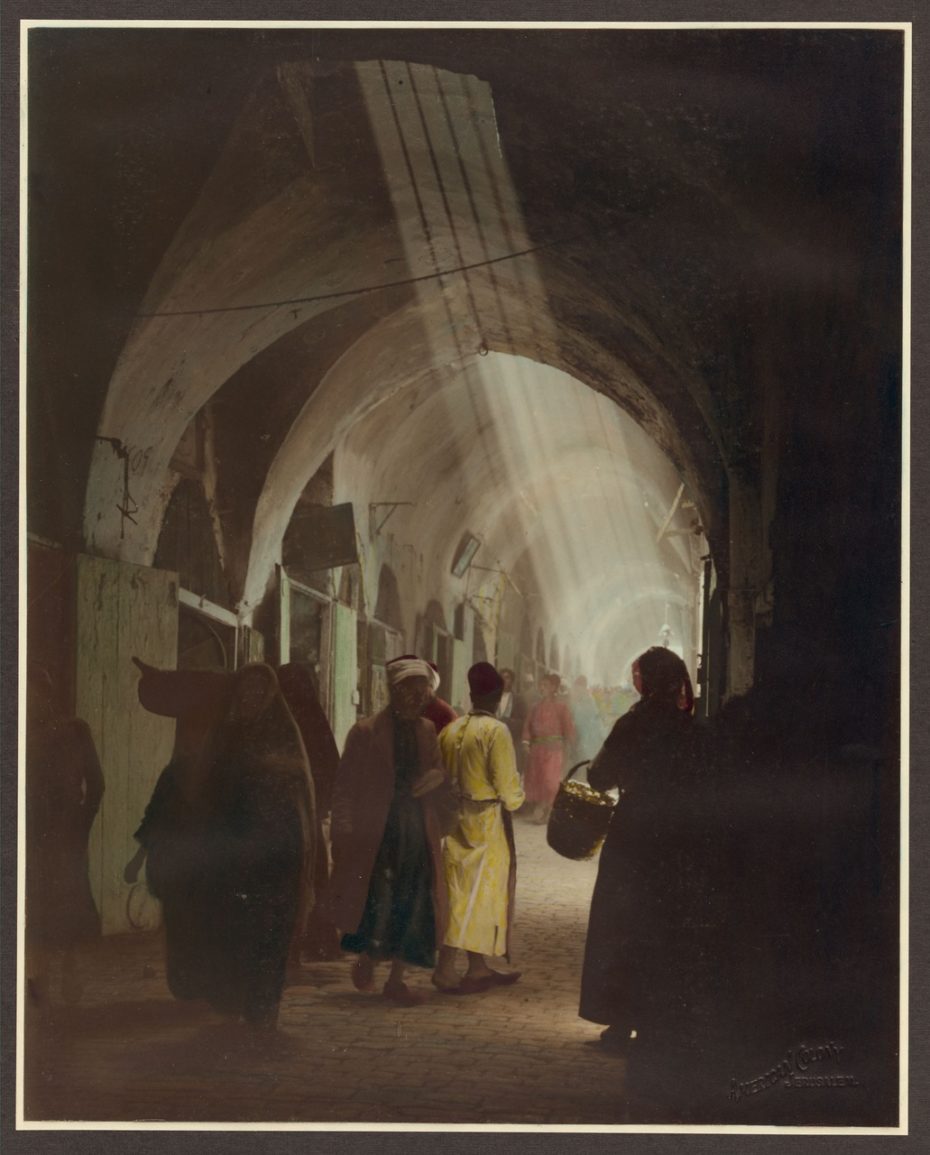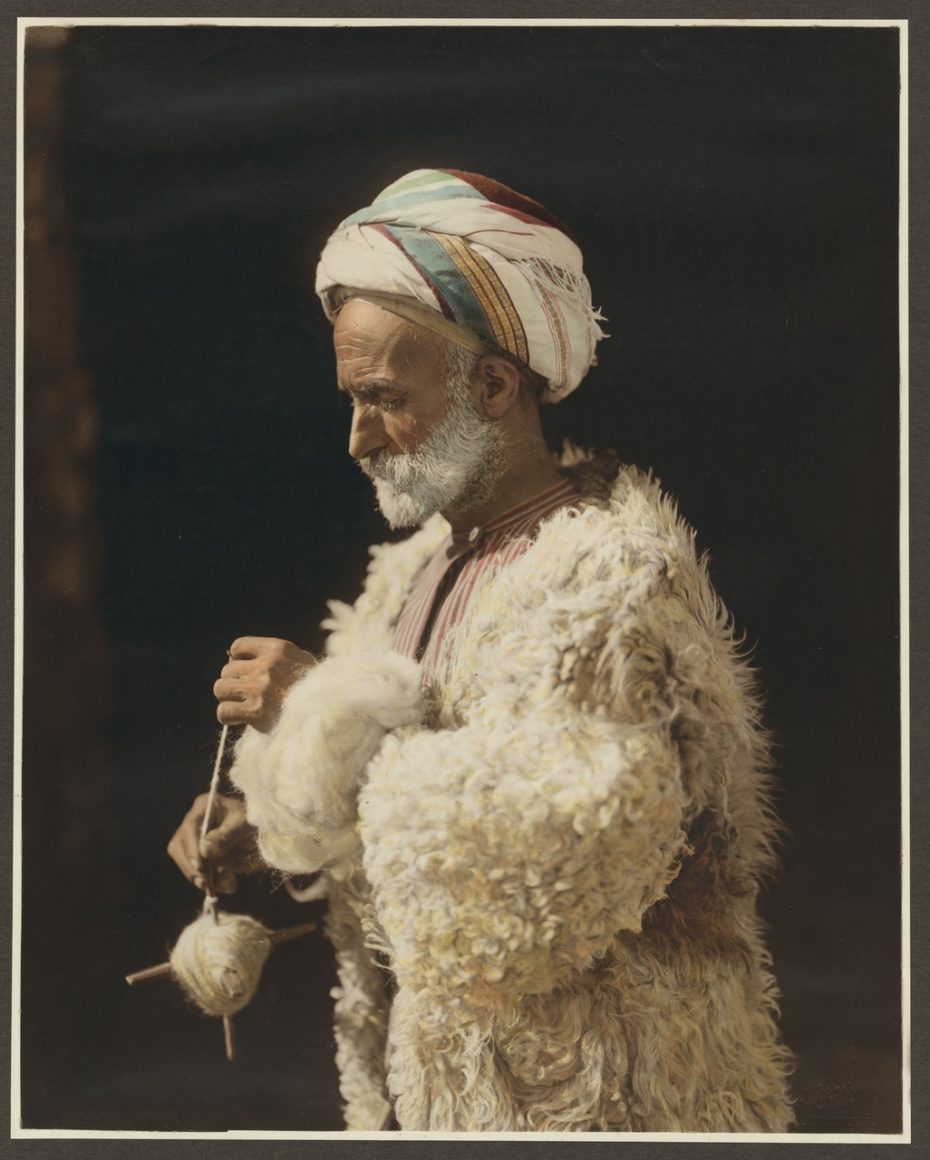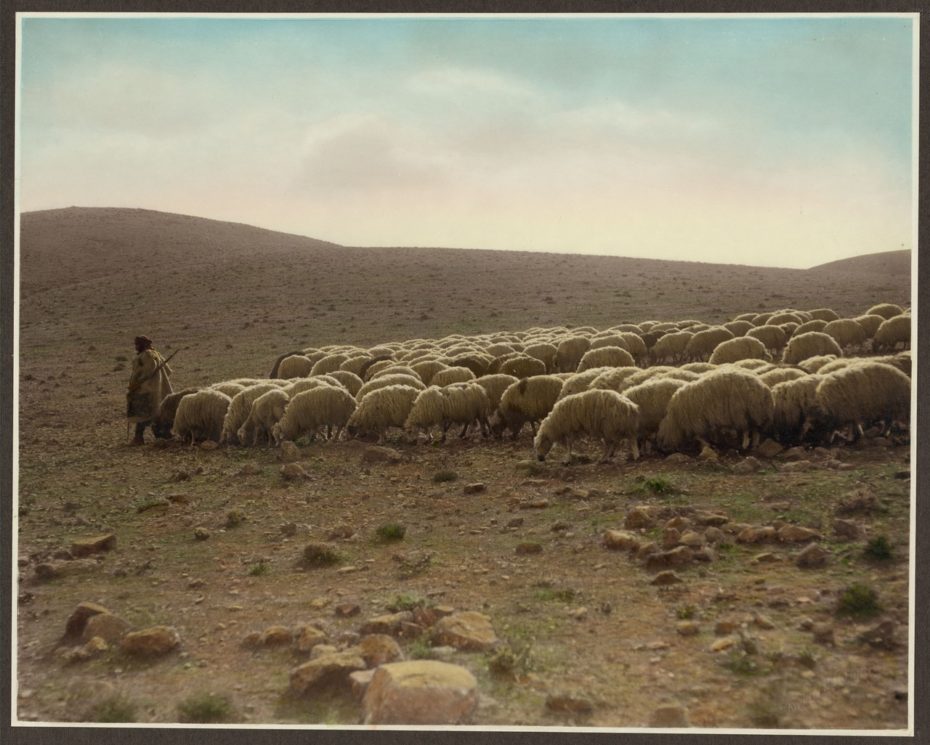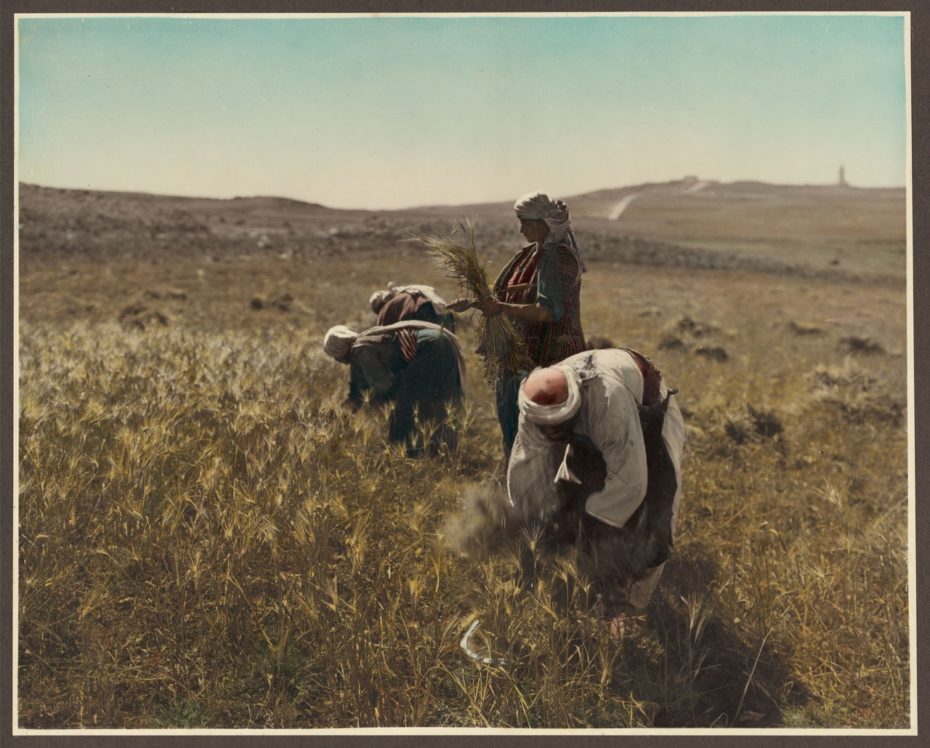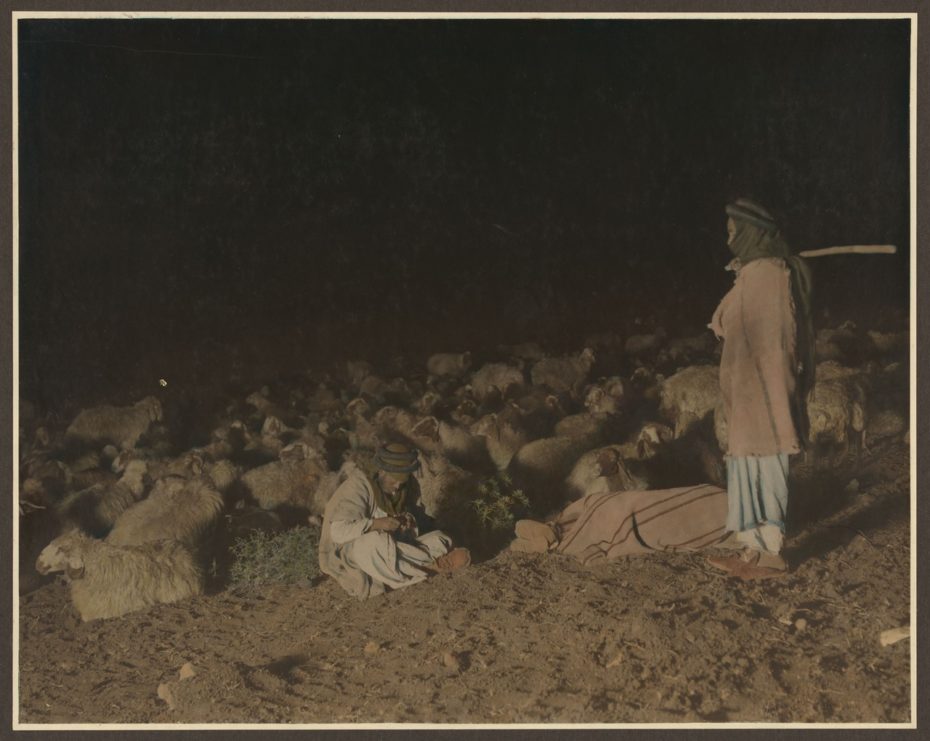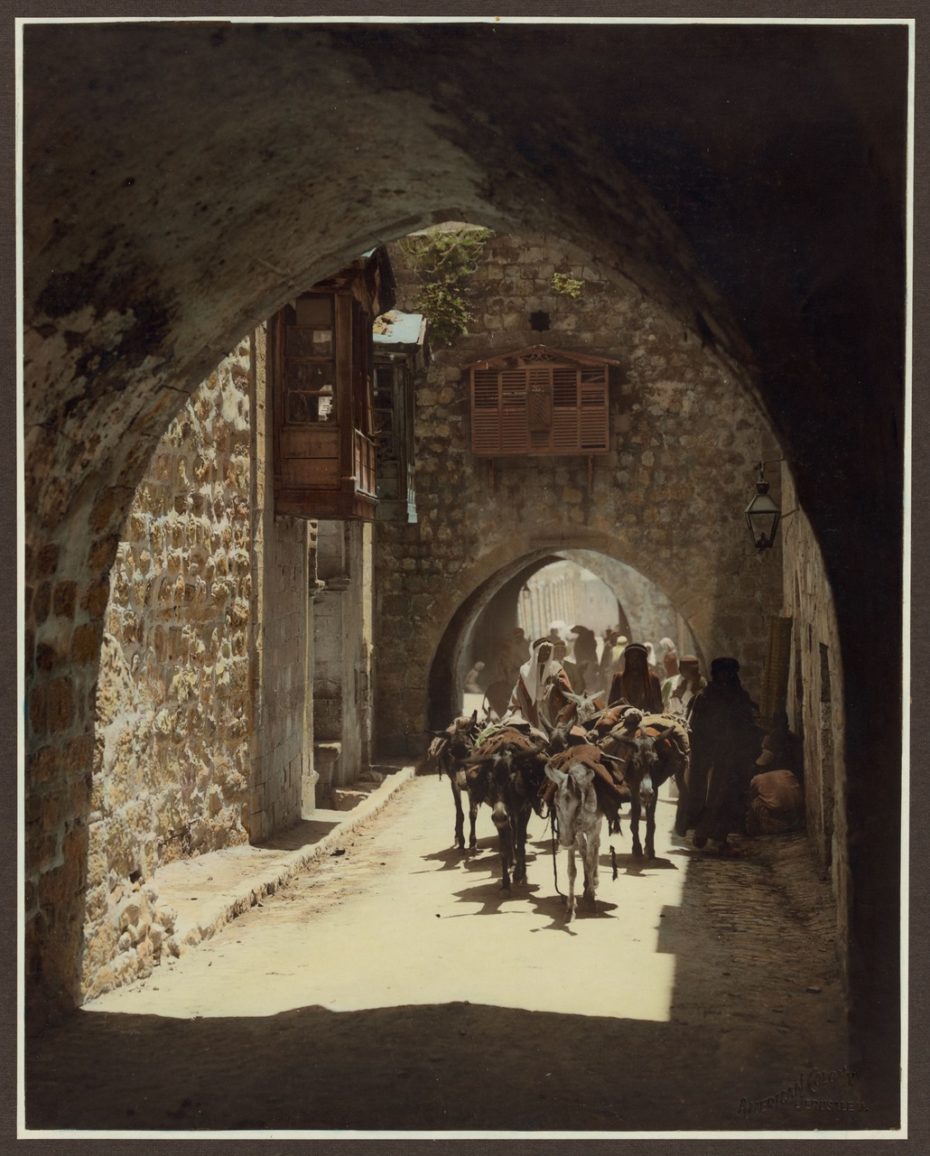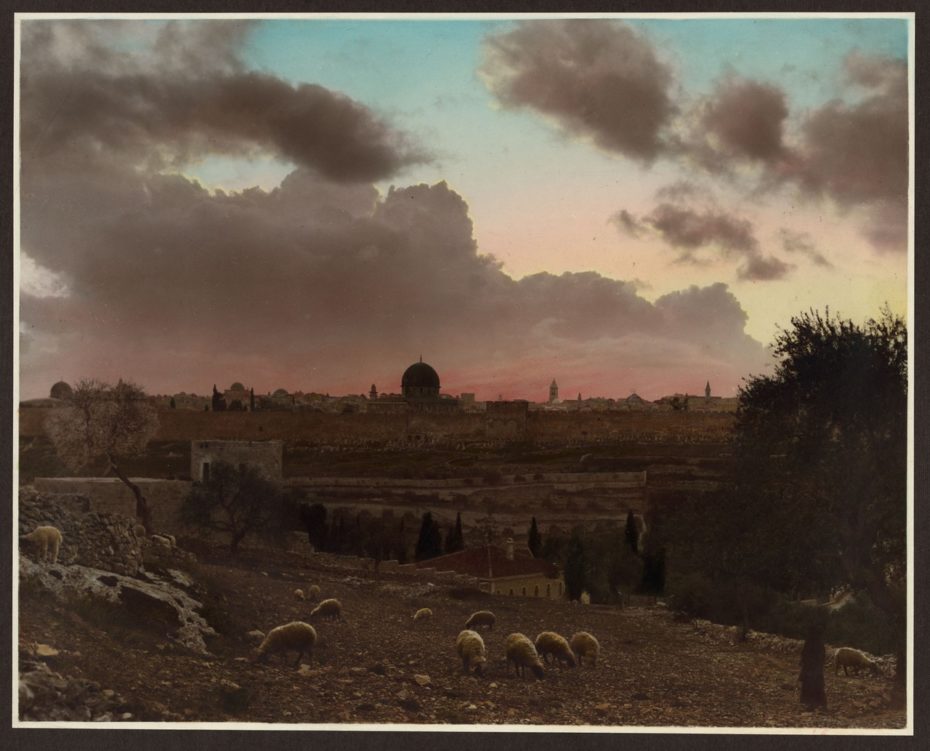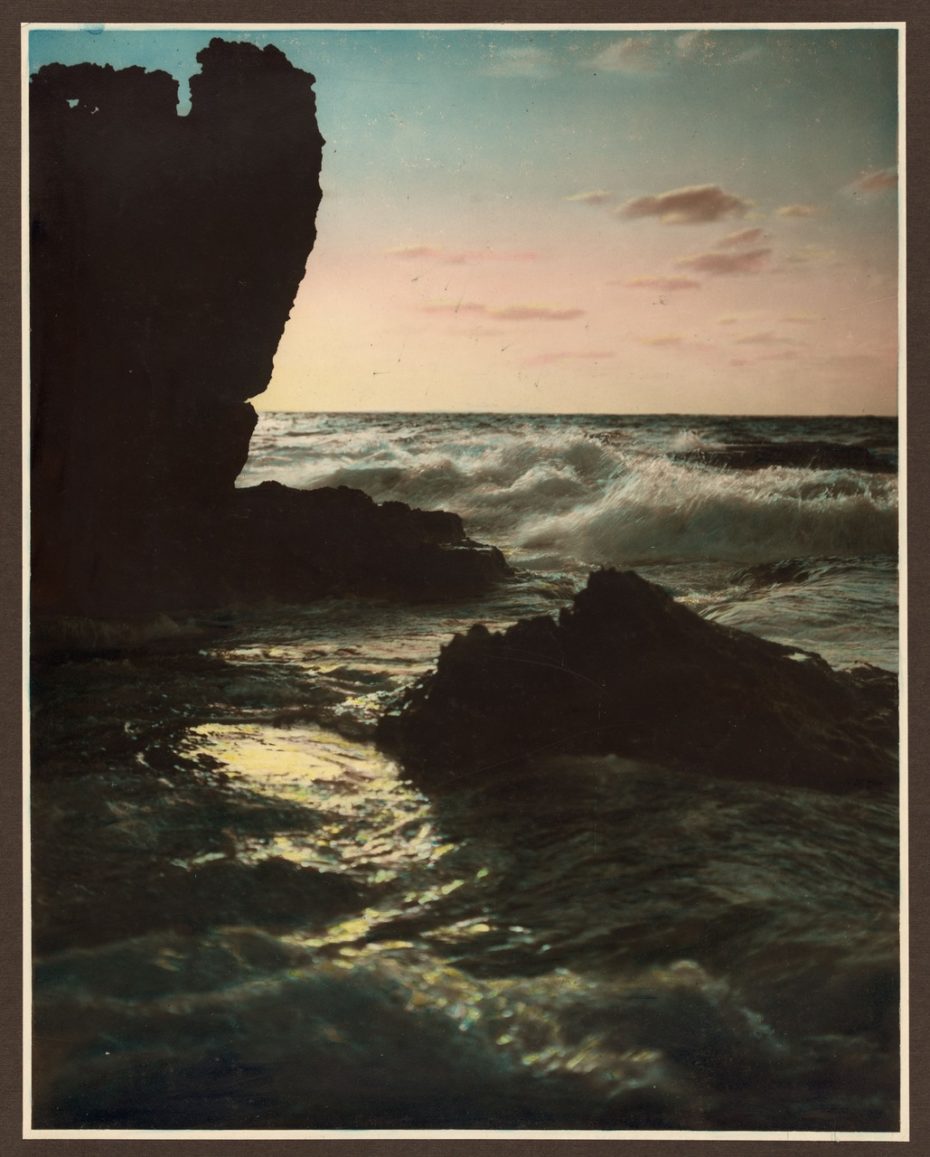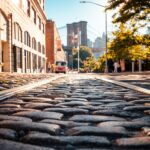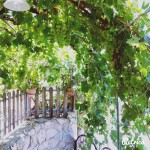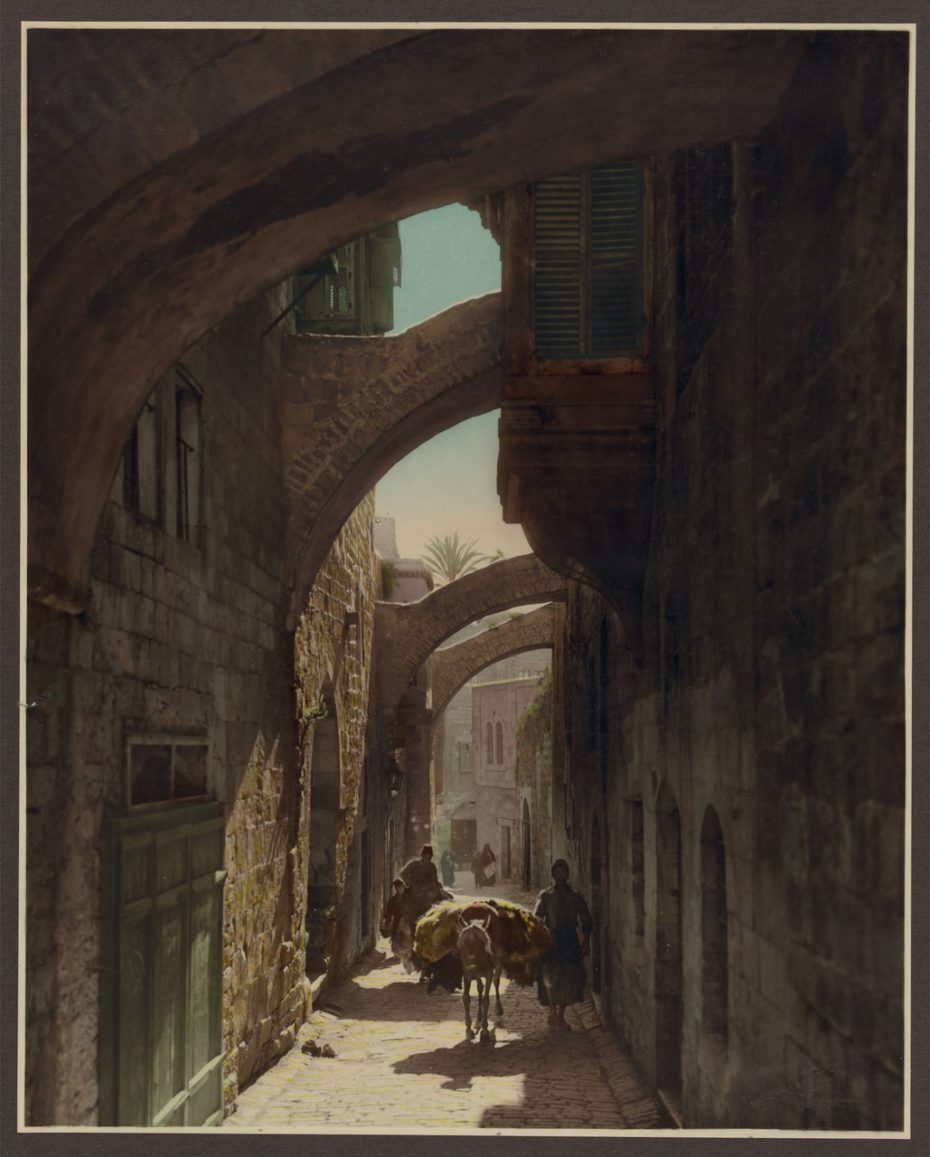
I prefer this place to be your safe haven from political opinion and the horrors of the news. While we hold onto hope for humanity and healing, I share with you an archive collection of photographs transporting us to a more a peaceful time for this ancient and diverse culture…
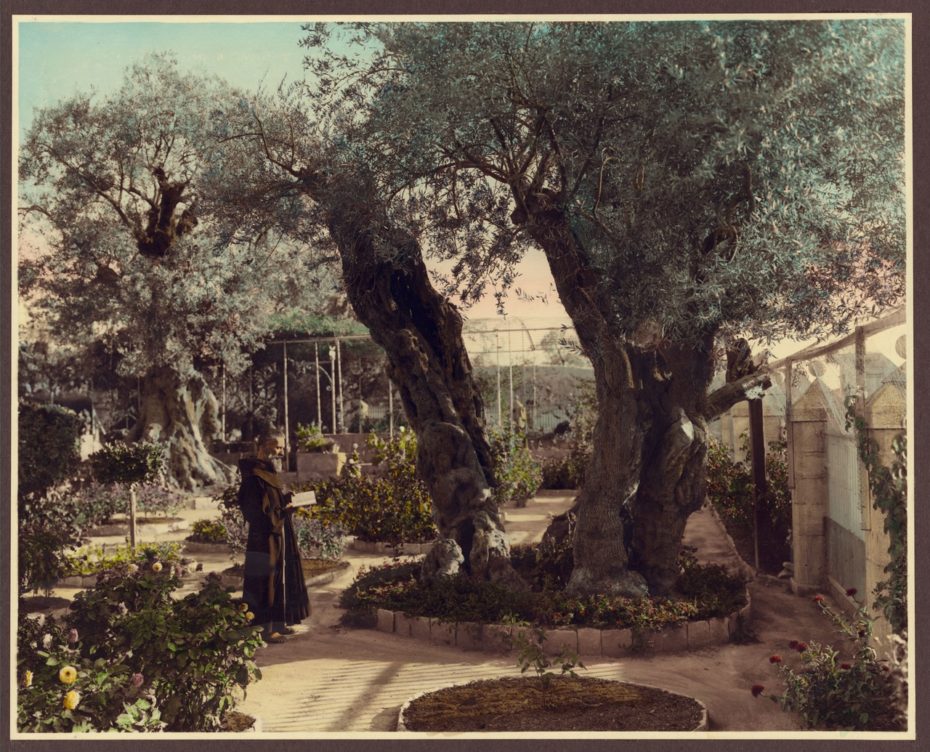
The photographs were taken in the present day territories currently in the thick of Israeli and Palestinian conflict, including the West Bank. Above, a monk is reads in the Garden of Gethsemane, at the foot of the Mount of Olives in Jerusalem – a place that can still be found in a similar state today. The photographs of the arched street in the Old City were taken on Via Dolorisa, the Way of Suffering, a circuitous route believed by many to follow the path that Jesus walked, carrying his cross, on the way to his crucifixion. Other scenes include portraits of Arab Jews, people of Ramallah (a Palestinian city in the central West Bank), village carpenters, Bedouins, shepherds near the Jordan Valley in the West Bank and ships at the Sea of Galilee.
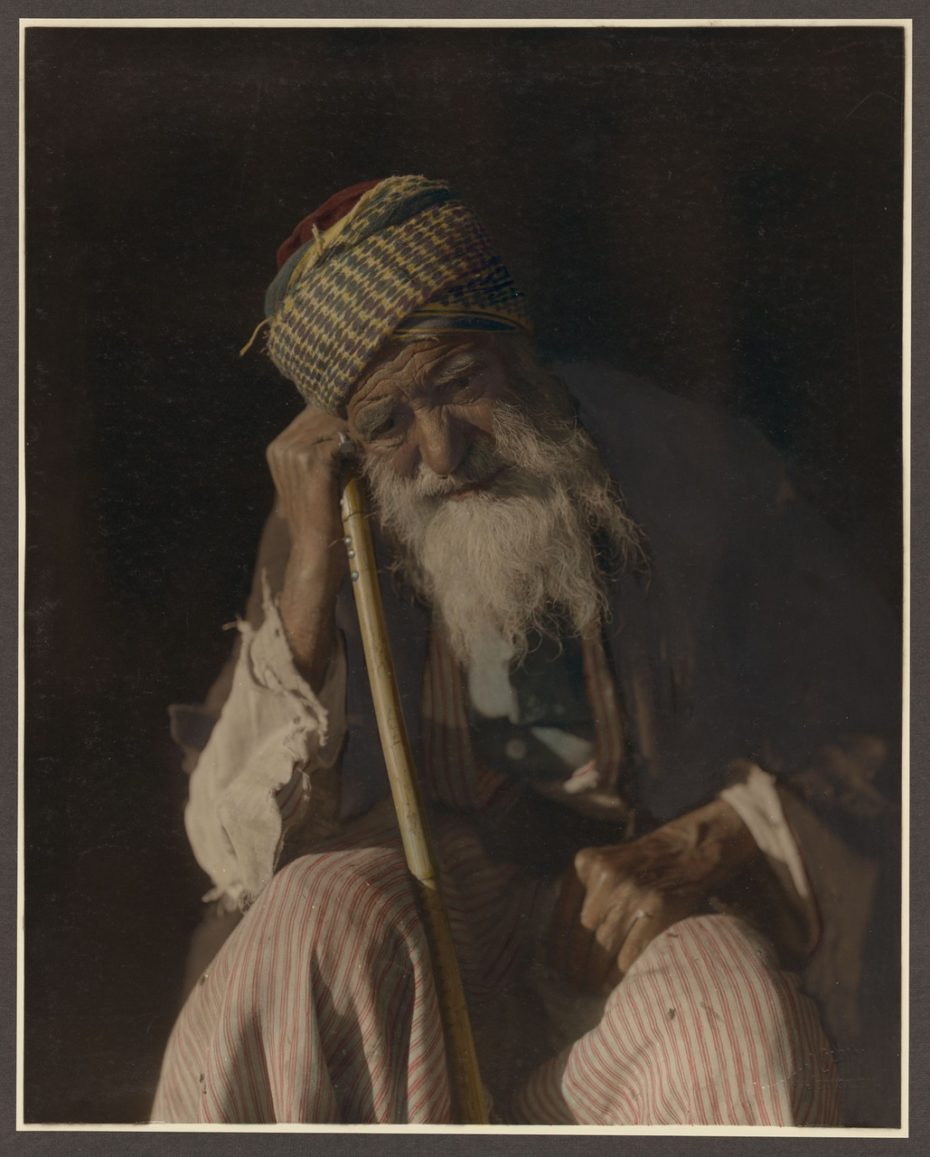
The photographs were taken, if you can believe it, in 1919, by the photographers of a small agency known as the American Colony Photo Department, located in Jerusalem at the dawn of the 20th century. According to the Library of Congress, which has made the photographs available online, the agency was founded in the late 1890s by Elijah Meyers, and headed during its heyday a by Lewis Larsson, whose staff photographers included Erik Lind, Lars Lind, Furman Baldwin, and G. Eric Matson. The library archivists have stated that many of the photographs are hand-painted, although I would argue this might also be the handiwork of a method known as photolithography, in which black and white photographic negatives are transferred to colour lithographic printing plates or stones, rather than tinted by hand. It could be a combination of both techniques to highlight certain colours.
